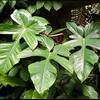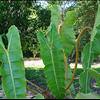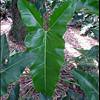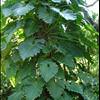This plant may be available to buy
Click the banana to see

|
Philodendron click pic to enlarge |
|
Zone 10 The genus Philodendron contains at least 200 species and there are hundreds more hybrids developed by individuals and commercial nurseries. Thus, names are a problem and confusion is common click pic to enlarge click pic to enlarge click pic to enlarge Philodendrons are tropicals and demand warm weather throughout the year. Wind exposure and salt spray are out of the question. Good protection is the best location for almost all species click pic to enlarge Many are used as house plants. Many can enjoy shade, even deep shade Philodendrons can be excellent in the outdoor landscape (if you already have appropriate conditions), indoors, in pots, or in pots outdoors. Most request soil that is not allowed to dry out but is never wet, just moist. A complex organic soil mix is always appreciated by the philodendron. Organic fertilizers work very well Their "flowers" are spadices, erect, often white, housed within boat-shaped spathes. Here's a great flower photo sent in from Kramer Kreations In the picture at the top of this article is the extremely popular philodendron sellom, a self-heading (versus vining type) philodendron. Here's a vine type climbing a tree. The sellom can be used in the sun but adapts even to deep shade. Partial sun is best in appearance of leaves. Philodendron speciosum looks similar to the sellom, but is larger and more robust In the selloum, the leaves can be huge, as much as 4-5 feet tall and almost as wide. The leaves grow off of heavy trunks that send down many thick strong aerial roots which stabilize the trunk's posture. Over time in the open landscape, this becomes a mass in the soil and above ground as well The sellom is very commonly used by landscapers most often arriving in 3-gallon pots, small, cute, fluffy showing no apparent "danger" for the landscape. However, most landscapers and landscape architects plant too many too close, often 2-3 feet on center Over a few years, so planted, the selloms completely take over the planting area and look awful. For example, in the picture, you see one plant. Imagine dozens planted in one continuous area with many 4-5 feet tall. It's a mess and Master Gardener extracts as many as we plant. However, used right in the right spacing, sellom is an excellent tropical landscape accent plant |




